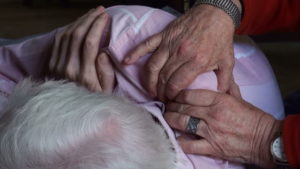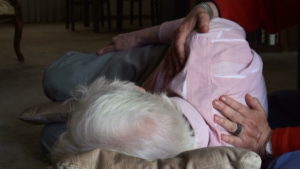The Body Cognition method uses a combination of various aspects. It is based on an in-depth knowledge of anatomy, physiology, biomechanics and pathology; provides precise diagnosis and at the same time is creative, diverse, non conventional, variable and even intuitive.
It is exact, meaning it locates with precision the problem areas and treats them specifically, and at the same time holistically: it extends from the problem area to other body parts and even to the entire body, and is considerate not only of the patient’s body but also of his/her nature and emotional make up.
The relevant area expands beyond the problem area, since in many cases even parts that are more remote from the problem area are not in their optimal state. At times, treatment in a remote part from the problem area is required in order to condition the body to move and receive touch and through this it is possible to approach the source of the problem cautiously.
It is a delicate, flowing, pleasant, and mindful treatment which respects and reacts to pain, yet it is thorough and comprehensive.
All Body Cognition therapists start out as teachers in group lessons. Only after that they learn how to be therapists and are certified, while continuing to participate as students in movement lessons. This training course enables them to improve their therapy skills, through exposure to the average abilities of “regular” people and a continuous cultivation of their own body sensations as a tool to understanding the patient.
Therapist have a vast anatomical knowledge of the body, they know how to identify all the layers beneath their hands: the muscle they touch, the direction of its fibers, the nerves and blood vessels passing through it. Particularly, they must understand how all this relates to the patient’s complaints. Moreover, the use of hands and fingers requires extreme concentration on the information received through their sensors about the patient’s condition.

The treatment is based on a combination of various key components – movement, touch and verbal communication. And these are its principles:
- A combination of knowledge and sensation: therapists integrate theoretical knowledge with body awareness and the ability to see, understand and also sense the treated body through their hands, from knowing their own bodies.
- Methodical and personal treatment: the treatment is based on a theoretical concept suitable for everyone, as well as a personal treatment of each patient.
- A temporary dependence as a tool for independence: the personal and enveloping treatment might provoke a therapist patient dependency throughout the treatment period; the process of the Body Cognition treatment is intended to impart physical independence, through solitary work and personal responsibility to the patient, thus the temporary dependence on the need for treatment is resolved.

Pathologies may occur for many reasons, as opposed to the few symptoms that express them – the body possesses a limited range of possible reactions and symptoms which express these pathologies. This limited range includes: pain; redness; a disorder in the function of one or more systems. Therefore, it is not easy to diagnose the heart of the problem and its roots by symptoms alone, since they may be common to a few problems or branch out from different sources. Such clarification requires comprehensive detective work. This is the premise of treatment in the Body Cognition method, hence the large scope of the treatment.
It is crucial that each problem is treated constitutionally and not just symptomatically, since it may have implications on other body parts. This approach is different than those often conventionally accepted by the healthcare system. The therapist using the Body Cognition method examines more than just the problem area, as is customary in a post operation check-up or an immobilization treatment, but rather treats the condition in a comprehensive and relevant manner by long term observation. The fact that a patient can enter the examination room on his/her feet is no reason to check a V on the success of the orthopedic medical treatment. It is well advised to check if the patient is still limping, how many painkillers he/she needs, whether there is any projection of the injury or treatment on other parts of the body and if he/she has gained full function in every area of life.

A personal, ongoing, methodical, tolerant and inclusive relationship is preferable over specialization which divides the person into many diminutive parts and areas of specializations that do not correspond with one another, from a professional and organizational perspective. This method enables therapeutic ideas to ripen, allows a considerable amount of time for each patient and pays personal attention to the patient’s general condition as well as to his/her condition at the time of the examination.
The number of one on one sessions in the treatment are not determined, and depend on the individual, the problem, its complexity, the rate of the patient’s progress, the patient’s ability to comprehend and implement the treatment and the ability of the therapist to direct the treatment and adapt it to the problem. This also applies to the number of sessions per week. It is all set according to various considerations, and will not be predetermined by any protocol. A thorough treatment is not a short process. It demands an in-depth research of the source of the problem and not just alleviating its symptoms, so that the problem will not reoccur after overcoming its acute stage. Some of the problems can be cured, improved or maintained, and in some cases the goal is to slow down the degenerative process.
The treatment process and teaching in the Body Cognition method deal as much with the brain as with the bones and muscles, understanding that a good orthopedic system depends, among other things, on the neurological system, the conscious and subconscious one, since a reciprocal relationship exists between these two systems.
Treatments are administered by a slow and soothing touch of the hands.
